Shaping Sustainable Features: Innovations in Glass, Form & Technology
With the rapid transformation of the architectural landscape and urbanisation, the role of glass has extended far beyond transparency and aesthetics to become an active design component that balances daylight and enhances comfort, redefining the sustainability goals of contemporary architecture.
This was the central focus of a recent Glass Academy webinar hosted by Saint-Gobain, where Ar. Hiloni Sutaria, founder of HSC Designs, shared her deep insights into how form, material intelligence, and computational tools converge to make climate-responsive and user-centric design spaces.
HSC Designs is a young architecture studio based in Ahmedabad, India, led by Hiloni Sutaria. Known for her research-driven, innovative and climate-specific approach, Ar. Sutaria presented compelling insights from her projects, where glass solutions respond to sun, shade, and user behaviour. Let’s explore the key takeaways from her session.
Redefining Glass in Contemporary Architecture
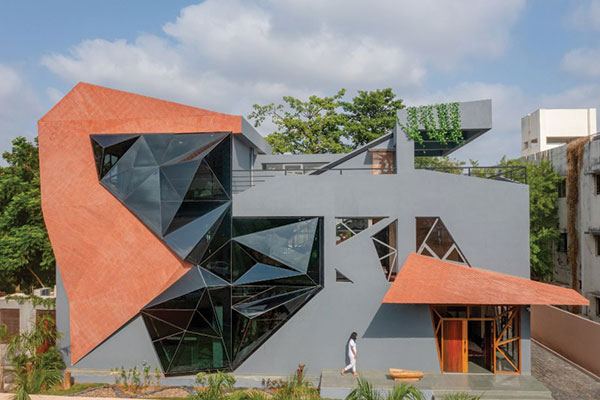
Coated Glass To Enhance Daylight and Reduce Heat Gain Source- HSC Designs
While glass has always been celebrated for its aesthetic value, Hiloni emphasises its functional intelligence when integrated thoughtfully. For example, in one of her recent projects, House of Dynamic Sunlight, a dramatic double-height glazed space serves not only as a visual centrepiece but also as a climate-responsive feature, bringing maximum natural light throughout the day without significant heat gain.
The strategic building orientation combined with film-coated glass contributes to comfortable and cooler interiors without sacrificing openness or transparency. These high-performance coated glass solutions reduce solar heat gain while still allowing ample visible light to pass through.
In this way, glass actively supports passive design strategies, thereby maintaining a stable indoor temperature and lowering reliance on mechanical cooling systems, while saving energy costs.
Designing for Ahmedabad’s Climate
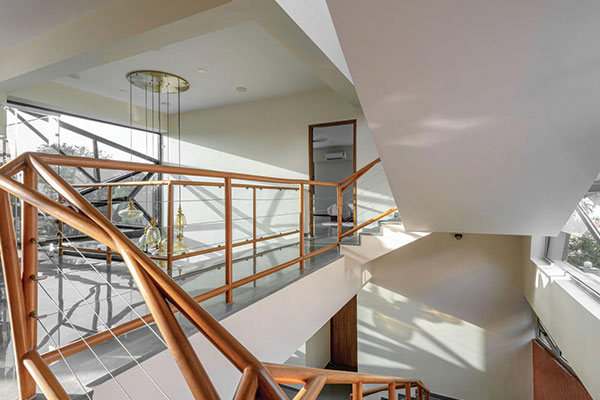
The Façade Becomes a Feature with Glass from the Inside Out. Source- HSC Designs
Designing in a hot and semi-arid region like Ahmedabad presents unique challenges and opportunities. Ar. Sutaria shared how her approach is deeply user-focused—from analysing daily movement patterns to understanding how materials interact with light, sound, and thermal conditions.
Ar. Hiloni highlighted strategies like:
- Orienting spaces based on solar angles
- Combining material innovation with computational design to create complex forms and also to optimise performance.
- For glass-clad facades, utilise high-performance glass solutions to minimise direct heat gain while maximising natural ventilation and daylight.
Pushing the Boundaries of Form and Technology
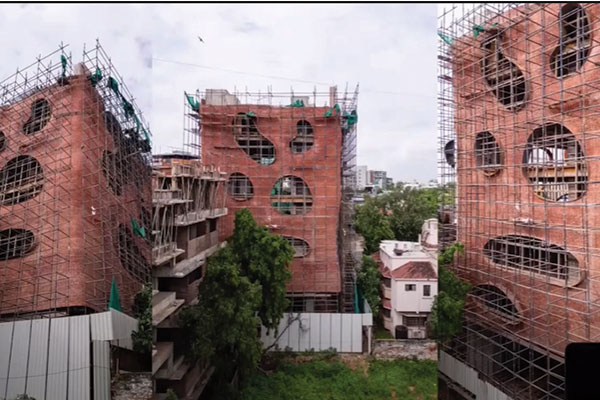
A Façade that Filters Light, Air, and Views Source- HSC Designs
Technology is a driving factor in Hiloni’s design evolution, where glass serves as a medium for both innovation and responsiveness, helping create livable, breathable structures.
In one of her ongoing projects, a multi-speciality hospital in Ahmedabad, the facade is composed of curved brick volumes punctuated by organically shaped glass openings. Designed to create long, uninterrupted vistas of the outdoors, the openings bring in abundant daylight, helping to create a calm, healing environment.
The use of bricks with double-glazed openings is positioned to maximise cross-ventilation and daylight, minimising glare, while the curved profile provides passive shading from the harsh western sun.
This is a striking example of how architectural form can directly influence well-being and sustainability.
Role of Glass in Interior Applications
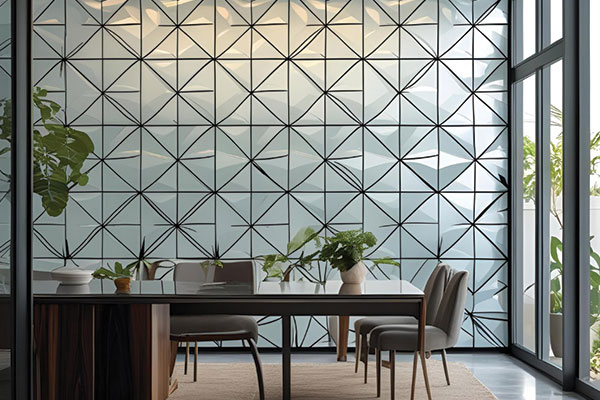
Textured Glass Wall Panelling Etched in Precision and Elegance
Beyond facades, Hiloni also explored how glass is becoming a versatile and expressive material within interior spaces, merging structure with elegance.
From glass partitions that offer spatial flexibility and visual continuity to tinted, textured or coloured glass finishes in furniture, cabinetry and wardrobes that add sophistication, its applications are both functional and aesthetically pleasing.
All of this, she notes, is achieved without compromising on durability, ease of maintenance and sustainability, making glass a truly multifaceted material in contemporary interior design.
Sustainability in Practice
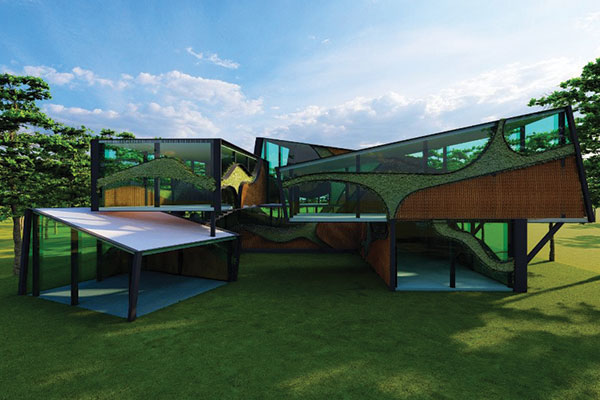
A Fusion of Fluid Forms and Advanced Glass Solutions Source- HSC Designs
For HSC Designs, sustainability is not an afterthought; it’s embedded in every stage. From zero-waste construction, material reuse and minimal site impact. Their process involves educating clients about the environmental cost of materials and involving them in decisions that support low-impact construction techniques.
The result is a warm, functionally inviting space that feels both modern and timeless.
The session highlighted how glass, when combined with climate intelligence and technological innovation, becomes far more than just a design material. It becomes a catalyst for change—enabling architects to craft spaces that are intelligent, beautiful, and in harmony with the surrounding environment.
To learn more https://www.youtube.com/watch?v=MOH6sPyiK8o&t=4s